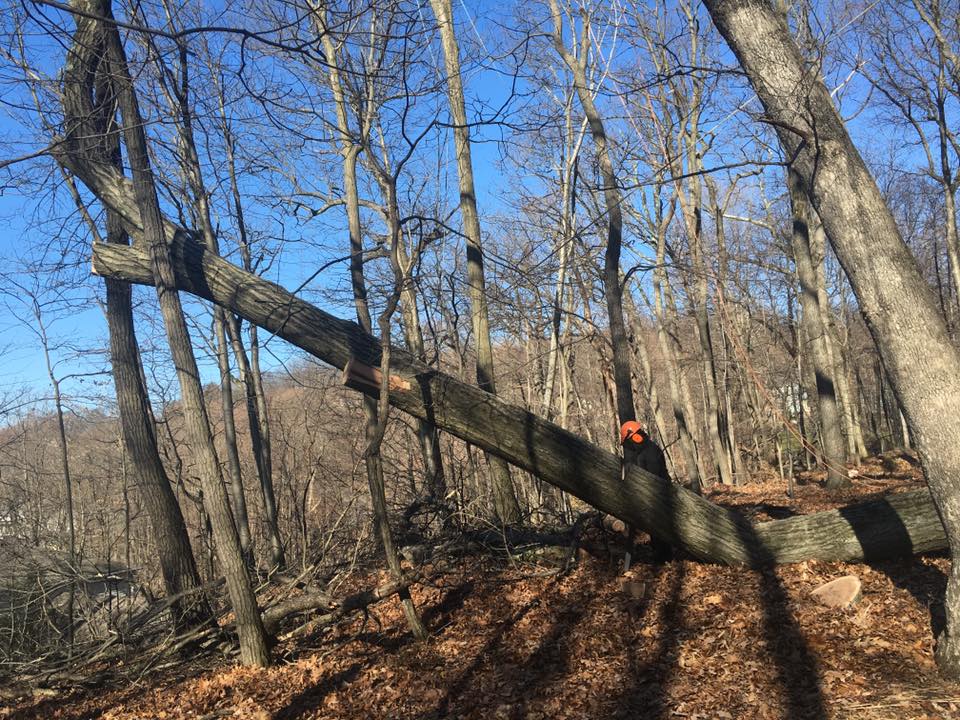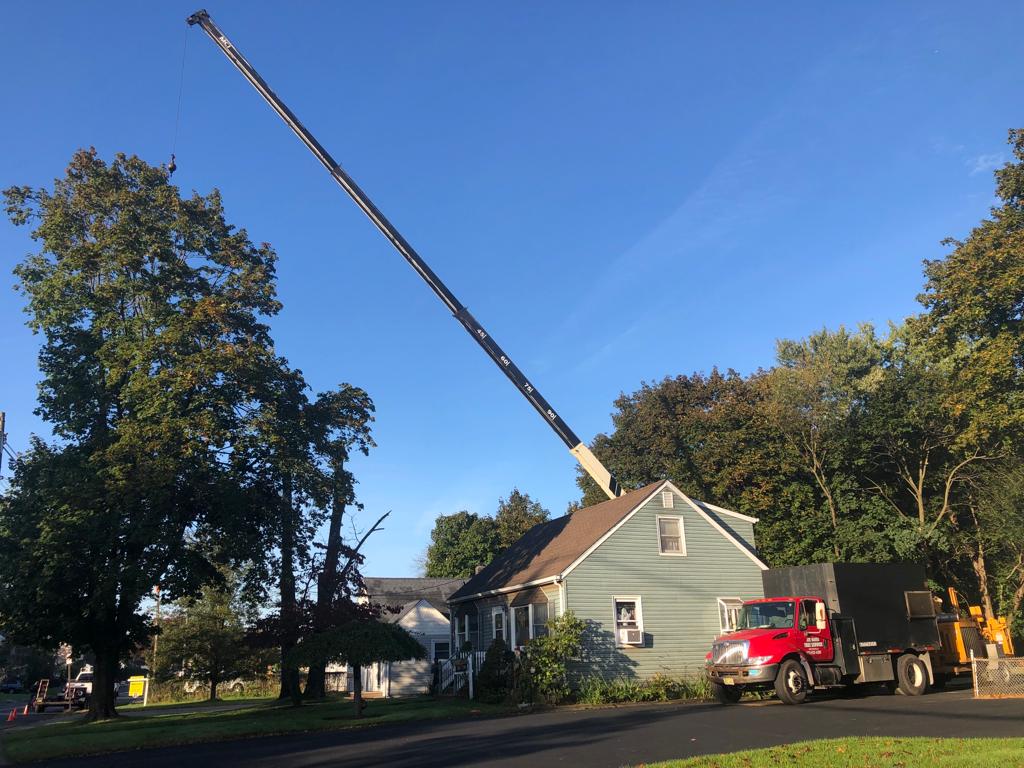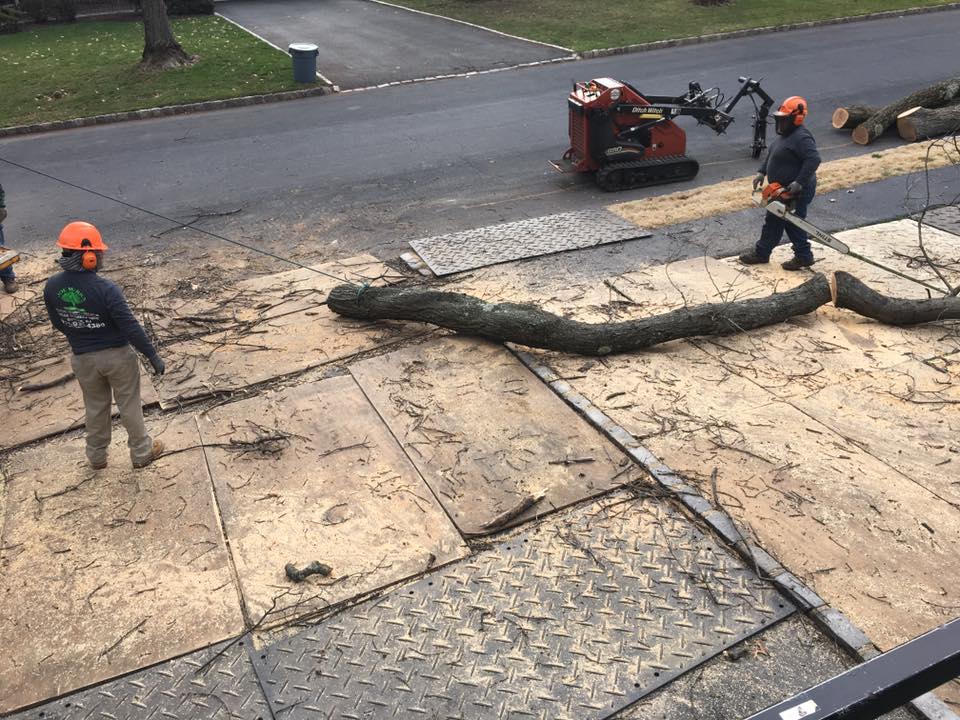
Never do this when cutting down a tree because this task requires careful consideration, planning, and execution. It’s crucial to prioritize safety and environmental responsibility. When you hire rookie tree companies or try to do it yourself, many common mistakes can occur during tree removal, leading to accidents, property damage, or harm to the ecosystem.
One of the gravest mistakes people make when cutting down a tree is diving in without a well-thought-out plan.
Before picking up any tools, assess the tree’s size, shape, length, and surroundings.
Identify potential obstacles like structures, power lines, or neighboring trees.
Plan an escape route, ensuring it’s clear and unobstructed. Skipping this crucial step increases the risk of accidents, injuries, or property damage.
States have specific regulations regarding tree removal to protect local ecosystems and maintain environmental balance.
Before cutting down a tree, familiarize yourself with local ordinances, permits, and restrictions.
Ignoring these laws can result in fines, legal consequences, or environmental harm. You can learn more about it by reading our blog post: can I throw neighbors’ tree branches back in their yard?
Some trees may be protected due to their age, species, or ecological significance, making it essential to obtain the necessary permissions before proceeding.
Safety should be the top priority when cutting down a tree. Not using proper safety gear is a common mistake that can lead to severe injuries.
Tree cutters should always wear helmets, safety glasses, ear protection, gloves, and sturdy footwear.
Additionally, the chainsaw man should follow the manufacturer’s safety guidelines.
Safety gear is a crucial barrier against potential accidents and ensures workers are well-prepared for unforeseen circumstances.
Misusing tools is a recipe for disaster when cutting down a tree. Whether it’s a chainsaw, an axe, or a wedge, understanding the correct techniques for each tool is essential.
Dull blades can cause accidents, and overusing a chainsaw can lead to overheating and malfunction.
Experienced tree services regularly maintain and sharpen their tools to ensure optimal performance.
They take the time to learn proper cutting techniques to minimize the risk of accidents and provide a smoother tree removal process.

Good tree services will assess a leaning tree carefully before cutting it. Failing to account for the lean increases the likelihood of the tree falling in an unintended direction.
Expert tree removers will stand back and observe the tree from different angles to determine the lean.
Then, they will adjust their cutting strategy to guide the tree’s fall in the desired direction.
By doing so they avoid property damage, injuries, or other unforeseen consequences.
Overlooking nearby electrical lines is a hazardous mistake that can have severe consequences.
Before cutting down a tree, a trusted tree service will identify the location of power lines and other utilities.
They will keep a safe distance and, if necessary, contact the utility company for assistance.
Falling branches or trees can cause power outages, fires, or electrocution if they touch electrical lines.
You should hire an experienced tree removal service to prioritize safety. These professionals will ensure a clear distance between the tree and utility lines.
When cutting down a tree, it’s crucial to consider nearby structures such as homes, sheds, or fences.
Failing to assess the surroundings can damage property and threaten the safety of those nearby.
At Joe Marra Tree Service, we plan our tree removal by avoiding structures, and if necessary, we use ropes or cables to control branches and logs descent.
Evaluating the environment minimizes the risk of accidents and ensures a controlled tree removal process.
Every tree plays a crucial role in the ecosystem, providing oxygen habitat and contributing to overall environmental health.
Disregarding the environmental impact of tree removal is a mistake that can have long-lasting consequences.
Before cutting down a tree, consider alternatives such as pruning or consulting with an arborist to explore options that preserve the tree’s ecological significance.
Additionally, replanting trees in the freed-up area can help mitigate the environmental impact of the removal.
Weather conditions play a significant role in the safety and success of a tree removal project.
High winds, rain, or snow can affect the tree’s stability and alter its falling direction.
Tree removal companies always check the weather forecast before initiating the removal process. If weather conditions are bad, they will postpone the task until conditions are more favorable.
Working in inclement weather increases the risk of accidents and compromises the overall safety of the tree removal process.

Cutting down a tree demands careful planning, attention to detail, and a commitment to safety and environmental responsibility.
Hiring Joe Marra Tree Service can ensure a smooth and secure tree removal process. We don’t make common mistakes such as skipping the planning stage, not using safety gear, and not abiding by local regulations.
To ensure the task’s success while minimizing risks and preserving the integrity of the surrounding ecosystem, our tree removal team will prioritize safety, follow proper techniques, and consider the environmental impact before cutting down your tree.
Remember, when it comes to cutting down a tree, our knowledge, preparation, and caution are the keys to smooth and safe tree removal.